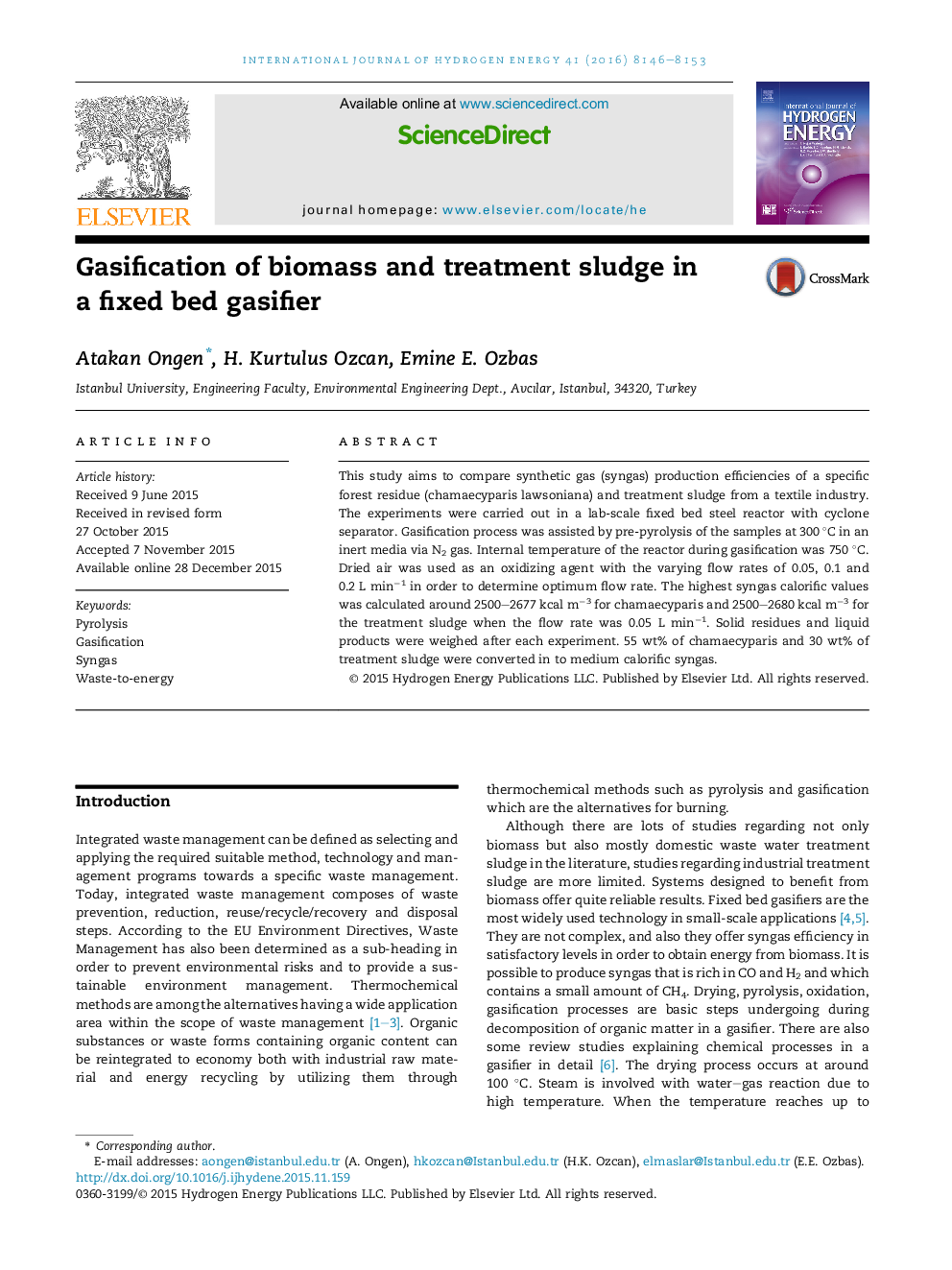| Article ID | Journal | Published Year | Pages | File Type |
|---|---|---|---|---|
| 1277308 | International Journal of Hydrogen Energy | 2016 | 8 Pages |
•This is an experimental study on a real industrial sludge.•We examine gasification behavior of a woody biomass and a waste sludge.•We monitor syngas composition of each feedstock.•Medium calorific value syngas was achieved during gasification.
This study aims to compare synthetic gas (syngas) production efficiencies of a specific forest residue (chamaecyparis lawsoniana) and treatment sludge from a textile industry. The experiments were carried out in a lab-scale fixed bed steel reactor with cyclone separator. Gasification process was assisted by pre-pyrolysis of the samples at 300 °C in an inert media via N2 gas. Internal temperature of the reactor during gasification was 750 °C. Dried air was used as an oxidizing agent with the varying flow rates of 0.05, 0.1 and 0.2 L min−1 in order to determine optimum flow rate. The highest syngas calorific values was calculated around 2500–2677 kcal m−3 for chamaecyparis and 2500–2680 kcal m−3 for the treatment sludge when the flow rate was 0.05 L min−1. Solid residues and liquid products were weighed after each experiment. 55 wt% of chamaecyparis and 30 wt% of treatment sludge were converted in to medium calorific syngas.
